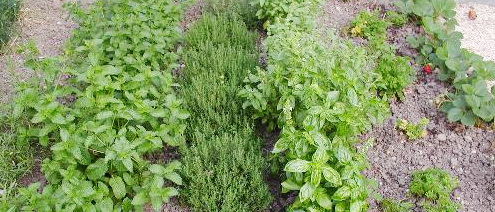Translation from original Spanish document signed and sealed by the Ministry of the Presidency – INADE (National Institute of Development) Republic of Peru, Special project Alto Huallaga

The Headquarters of the Zone Leoncio Prado-Padre Abad Certifies:
That since 7 months ago, in the area of Alto Huallaga, an Organic and Ecological technique called HOMA THERAPY, is being applied in the rejuvenation of the crops of the region, achieving to substantially reduce the existence of different pathogenic agents. As a consequence, plagues and diseases were eradicated, the yield of the harvest was increased, the fruit grew healthy, with better color, taste, weight, texture, etc.
Since many years, efforts have been made to overcome the critical situation regarding plant health, with methods such as: cultural control, chemical control, biological control, legal control, etc., without having achieved any success.
In the zone of Alto Huallaga to date we have established 30 modules and more are being installed in agricultural areas in which HOMA THERAPY is being applied, each one with 40 hectares. This makes a total of about 1,200 hectares; all of them are under an integrated system of perennial crops such as plantain, bananas, papaya, cocoa, citrus, avocados, coffee, tea, star fruit, mango, etc. These are combined with annual crops of a short vegetative cycle such as rice, corn, soya bean, nuts, sesame, etc., and complemented with apiculture and cattle rearing.
We give full support to Dr. Gloria Guzman Mendez in her capacity as expert and the person in charge of AGRICULTURAL HOMA THERAPY in our area of influence and we have considered to give total support to the farmers who have been working in the application of HOMA THERAPY because with their work, they are making a contribution in favor of agriculture, of the conservation of soils, forests and the preservation of the environment in the area of Alto Huallaga.
Tingo Maria, May 17th, 1999
MINISTRY OF THE PRESIDENCY-INADE
Special Project Alto Huallaga
(Signature)
_______________________
Engineer Jose A. Muñoz Cardenas
Chief, Support Office of the Zone L.P.-P.A.






 “Homa Farming has been applied in the banana plantation, Fountain of Joy (officially still called “Sorrows”) since 2007. It has 2 Homa Resonance Points installed with the respective cabins for the practice of Agnihotra and Om Tryambakam Homa.”
“Homa Farming has been applied in the banana plantation, Fountain of Joy (officially still called “Sorrows”) since 2007. It has 2 Homa Resonance Points installed with the respective cabins for the practice of Agnihotra and Om Tryambakam Homa.” “Since we started doing Homa Therapy and applying Biosol made with Agnihotra ash, our tea leaves are without infection. We have not had any crop loss due to pests or disease. We pruned our bushes recently and there has been no infection at all. The new leaves are green and lush. All tea leaves have a healthy sheen (glow). The leaves remain fresh even hours after picking. And the quality of leaves has improved greatly!”
“Since we started doing Homa Therapy and applying Biosol made with Agnihotra ash, our tea leaves are without infection. We have not had any crop loss due to pests or disease. We pruned our bushes recently and there has been no infection at all. The new leaves are green and lush. All tea leaves have a healthy sheen (glow). The leaves remain fresh even hours after picking. And the quality of leaves has improved greatly!”
 “There was one more tree whose name we don’t know and which grew from a small cutting to about 3.5 meters tall in one year and produced a crown full of flowers (see photo left). Another cutting of this was planted by us in a pot and then was passed on to my wife’s sister who lives about 8 Kms from our house. It grew to about 0.5 meter at the end of one year and there were no flowers.”
“There was one more tree whose name we don’t know and which grew from a small cutting to about 3.5 meters tall in one year and produced a crown full of flowers (see photo left). Another cutting of this was planted by us in a pot and then was passed on to my wife’s sister who lives about 8 Kms from our house. It grew to about 0.5 meter at the end of one year and there were no flowers.”



